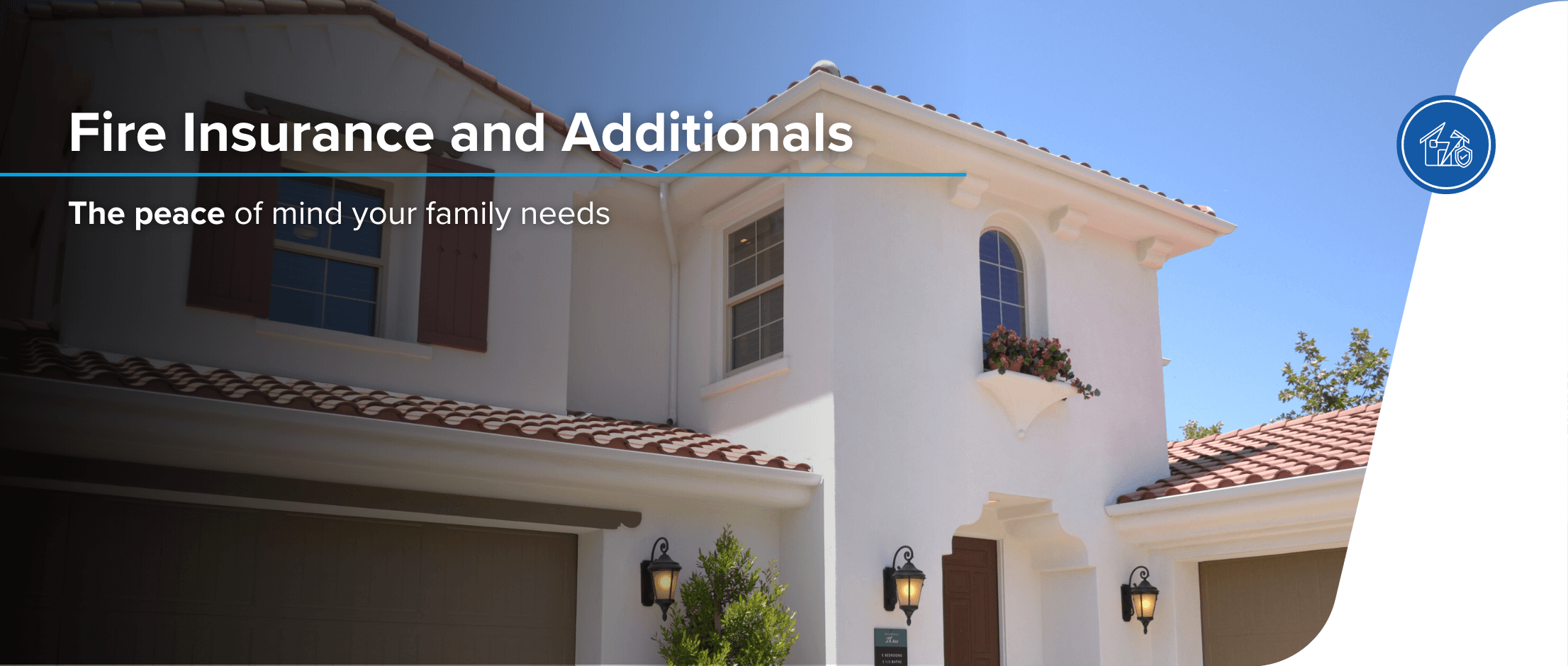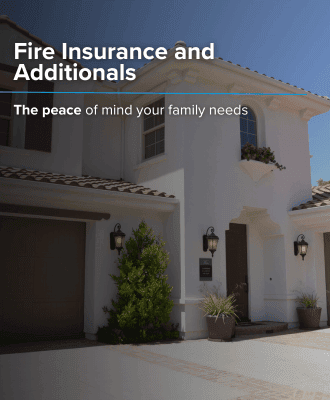






Ask for advice from our underwriters
Marco Cabello
mcabello@segurosorion.cl
Fire Insurance and Additionals
Homeowner insurance
Homeowner insurance aims to safeguard residential property. Coverage applies to any damage that may affect such property, as a result of the direct action of fire, heat, smoke, water and other means employed in firefighting. This policy can provide protection for household contents.
Coverage
Coverage
- Fire
- Fire + Earthquake
- Fire + Burglary
- Fire + Earthquake + Burglary
- Residential, Offices, Communities and Small and Medium-Sized Businesses
Information needed to quote:
• Name and Taxpayer ID number of the insured.
• Type of activity.
• Insured items (apartment or house).
• Total insured sum (building amount and content amount separately).
• Type of activity.
• Insured items (apartment or house).
• Total insured sum (building amount and content amount separately).
• Location of risk (street, #, district).
• Type of construction; year of construction.
• Breakdown of insured sums by location.
• Fire protection/prevention measures.
• Type of construction; year of construction.
• Breakdown of insured sums by location.
• Fire protection/prevention measures.
Information needed to quote:
• Name and Taxpayer ID number of the insured.
• Type of activity.
• Insured items (apartment or house).
• Total insured sum (building amount and content amount separately).
• Location of risk (street, #, district).
• Type of construction; year of construction.
• Breakdown of insured sums by location.
• Fire protection/prevention measures.
• Type of activity.
• Insured items (apartment or house).
• Total insured sum (building amount and content amount separately).
• Location of risk (street, #, district).
• Type of construction; year of construction.
• Breakdown of insured sums by location.
• Fire protection/prevention measures.
We cover property damage resulting from the direct or indirect action of fire. This applies to buildings and their contents (base coverage) plus the following:
We offer home emergency assistance to allow you to engage plumbing, locksmith, electricity and glasswork services.
• Explosions.
• Strike, riots, looting.
• Building collapse.
• Fire resulting from an Act of God.
• Weight of snow.
• Avalanches, mudflows and landslides.
• Wind, flooding and overflowing streams
• Strike, riots, looting.
• Building collapse.
• Fire resulting from an Act of God.
• Weight of snow.
• Avalanches, mudflows and landslides.
• Wind, flooding and overflowing streams
• Falling aircrafts
• Loss of rental income
• Inhabitability
• Debris removal
• Pipe breakage
• Glass
• Loss of rental income
• Inhabitability
• Debris removal
• Pipe breakage
• Glass
We cover property damage resulting from the direct or indirect action of fire. This applies to buildings and their contents (base coverage) plus the following:
We offer home emergency assistance to allow you to engage plumbing, locksmith, electricity and glasswork services.
• Explosions.
• Strike, riots, looting.
• Building collapse.
• Fire resulting from an Act of God.
• Weight of snow.
• Avalanches, mudflows and landslides.
• Wind, flooding and overflowing streams
• Falling aircrafts
• Loss of rental income
• Inhabitability
• Debris removal
• Pipe breakage
• Glass
• Strike, riots, looting.
• Building collapse.
• Fire resulting from an Act of God.
• Weight of snow.
• Avalanches, mudflows and landslides.
• Wind, flooding and overflowing streams
• Falling aircrafts
• Loss of rental income
• Inhabitability
• Debris removal
• Pipe breakage
• Glass
• Adobe construction risks.
• Constructions over 50 years old.
• Rural wood risks.
• Assets declared National Monuments.
• Free trade zone.
• Islands in general.
• Defective electrical installation or not subject to
standard.
• Constructions over 50 years old.
• Rural wood risks.
• Assets declared National Monuments.
• Free trade zone.
• Islands in general.
• Defective electrical installation or not subject to
standard.
• The lack of risk-specific safety measures in place or
taken to prevent or mitigate a fire, e.g. fire extinguishers with the proper quality and in the correct amount based on the size and arrangement of facilities.
• Bad incident history (frequency and severity).
• Bad conservation state, not meeting basic safety and
usability requirements.
taken to prevent or mitigate a fire, e.g. fire extinguishers with the proper quality and in the correct amount based on the size and arrangement of facilities.
• Bad incident history (frequency and severity).
• Bad conservation state, not meeting basic safety and
usability requirements.
• Adobe construction risks.
• Constructions over 50 years old.
• Rural wood risks.
• Assets declared National Monuments.
• Free trade zone.
• Islands in general.
• Defective electrical installation or not subject to
standard.
• The lack of risk-specific safety measures in place or taken to prevent or mitigate a fire, e.g. fire extinguishers with the proper quality and in the correct amount based on the size and arrangement of facilities.
• Bad incident history (frequency and severity).
• Bad conservation state, not meeting basic safety and usability requirements.
• Constructions over 50 years old.
• Rural wood risks.
• Assets declared National Monuments.
• Free trade zone.
• Islands in general.
• Defective electrical installation or not subject to
standard.
• The lack of risk-specific safety measures in place or taken to prevent or mitigate a fire, e.g. fire extinguishers with the proper quality and in the correct amount based on the size and arrangement of facilities.
• Bad incident history (frequency and severity).
• Bad conservation state, not meeting basic safety and usability requirements.
Why is homeowner insurance necessary?
Homeowner insurance is a type of coverage where risks are transferred to an insurance company, which is responsible for compensating, in whole or in part, any damage resulting from the occurrence of given situations.
What are the advantages of taking out homeowner insurance?
You will have the peace of mind that, in the event of loss, you will receive economic compensation or a service, in the event of a situation as set forth in the policy occurring.
FREQUENTLY ASKED QUESTIONS
Preguntas Frecuentes
The maximum allowable term is 18 (eighteen) months.
We have an all-in 2.10‰ rate, distributed as follows: 0.20‰ taxable, 1.90‰ tax-exempt.
We do not insure holiday homes. This would only be possible if the main house was insured with us and it met basic safety and usability requirements.
We offer the following payment methods: cash, 3 (three)-10 (ten) installments, automatic bill payment (PAC) up to 10 (ten) non-interest installments, automatic card payment (PAT) up to 10 (ten) non-interest installments.
This could only be insured as optional coverage under the fire policy, and the insurable sums are limited.




































